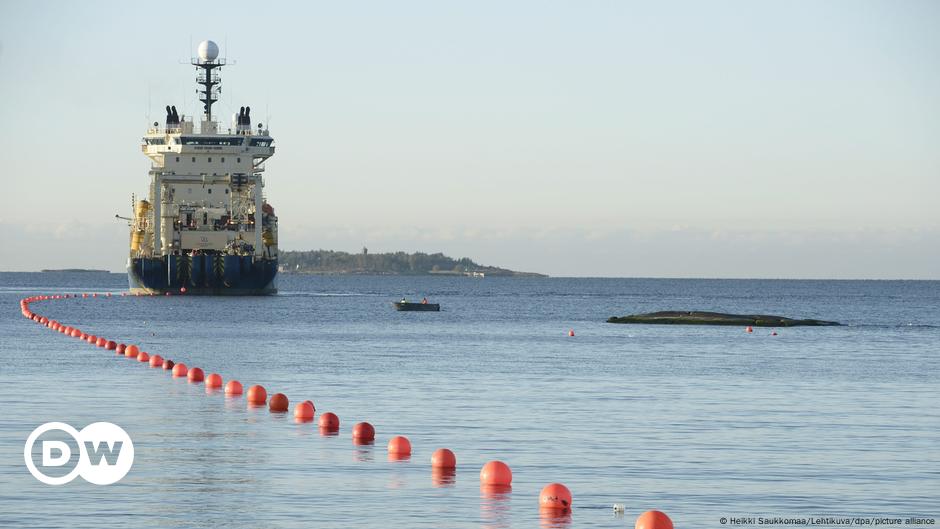Due to a lack of hotels in host city Belem, delegates will have to sleep on cruise ships.
As the COP29 UN climate talks draw to a close in Azerbaijan, next year's hosts are busy preparing for their turn.
For the last few years, climate scientists, environmentalists and Brazilian President Luiz Inacio Lula da Silva have been talking up the first UN climate conference to be held in the Amazon.
The largest tropical forest in the world stores huge amounts of planet-warming greenhouse gases, making it crucial in the world's fight against climate change.
In addition to the symbolism of hosting in the Amazon, COP30, as the climate talks will be called, will be a pivotal gathering because nations must come with updated plans to reduce emissions.
But when tens of thousands of participants arrive in the host city of Belem next year, they won’t find idyllic rainforest, lush vegetation or clean rivers.
Belem struggles to prepare to host COP30
In Belem, impoverished, crime-ridden and filled with inequalities, most of the 2.5 million residents live in slums. Only two per cent of the city's sewage gets treated, placing a heavy toll on its 14 river basins.
Since it was designated host two years ago, this bustling metropolitan area near the Amazon River has been racing to prepare.
In several parts of the city, construction hoardings bearing 'COP30' signs surround buildings.
Three major hotels are under development, but that won't provide enough rooms, so organisers plan to get cruise ships that can house up to 5,000 people.
Brazil's government estimates that 50,000 people will attend COP30, including up to 150 heads of state.
COP30 will also serve as a test for Lula’s commitment to preserving the Amazon.
When he was elected for a third term in 2022, the leftist leader was celebrated for promises to curb the explosion of deforestation that occurred during the far-right government of President Jair Bolsonaro.
While Lula's administration has sharply reduced the rate of forest destruction, the Brazilian leader has made statements in favour of two of the most controversial projects in the region: opening the mouth of the Amazon River for large oil exploration and paving a highway that cuts through the most preserved section of the rainforest.
Mining giant builds park in Belem as COP30 venue
The government of Para, the state which is home to Belem, is trying to get ready through more than 30 infrastructure projects that range from tourism to urban development.
One of the largest is Parque da Cidade, or City Park, spanning 500,000 square metres atop a former airfield. It will be home to a museum, restaurants and walking and cycling trails. After serving as a venue for COP, it will become a green space for locals to use.
The project is being carried out by mining giant Vale, responsible for two of Brazil’s most devastating environmental disasters, in 2015 and 2019, when waste dams collapsed in Minas Gerais state, killing 291 people and contaminating hundreds of miles of waterways.
In a statement, the Para government said local legislation allows mining companies to pay a portion of mining fees in the form of public projects.
It also said Vale, which operates one of the world’s largest iron ore mines in this Amazon state, is in compliance with environmental laws.
Belem has often been ranked as one of the most violent cities in Brazil and even the world.
Organised crime and police-linked militia control parts of the city, and it's common for residents to recount robbery stories.
Security will be increased during the conference, with early plans to have the military, Brazil's intelligence agency and local law enforcement agencies involved.
Belem attempts to clean up sewage-filled river
The Tucunduba River, which runs through two of Belem’s poorest neighbourhoods, is the receptacle of much untreated sewage and garbage.
During a boat trip in October, Associated Press journalists experienced foul-smelling water and saw refrigerators floating amid islands of trash that herons would land on.
In the stretch next to the Terra Firme neighbourhood, its banks have been taken over by stilted houses built informally.
“I used to bathe here until I was 14. There were trees around, and the water was dark and cold,” said boatman Fabio Passos. But what used to be a river is now “a big ditch", he said.
The river pollution is connected to Belem's chaotic growth in the past decades when Brazil experienced a massive migration from rural to urban areas.
Until the 1970s, most of the Amazon population lived in the rainforest. Today, 75 per cent of its 28 million inhabitants are in urban areas, where poverty is widespread and drug-related violence rampant.
In preparation for COP30, under the name of “macro drainage,” the state government has been installing hundreds of concrete slabs along the banks of the river and its tributaries.
The project includes expanding the sewage and water supply systems and paving roads. In a statement, the state government said the effort “will help reduce flooding problems."
This approach has been criticised by Mandi, a women-led nonprofit environmental group focused on Belem’s rivers and climate change.
It argues that to prevent flooding it would be better to restore the river’s banks by planting vegetation and removing concrete, thus allowing its waters to run freely.
“The memory of the Amazonian person taking a bath in the river is fading away," said biologist Natasha Reis, a spokeswoman at Mandi.
"We cannot preserve what we do not love and experience. How will future generations have the desire to preserve a river that has always been a ditch for them?”

 By Euronews | Created at 2024-11-22 06:46:27 | Updated at 2024-11-22 13:27:29
7 hours ago
By Euronews | Created at 2024-11-22 06:46:27 | Updated at 2024-11-22 13:27:29
7 hours ago








